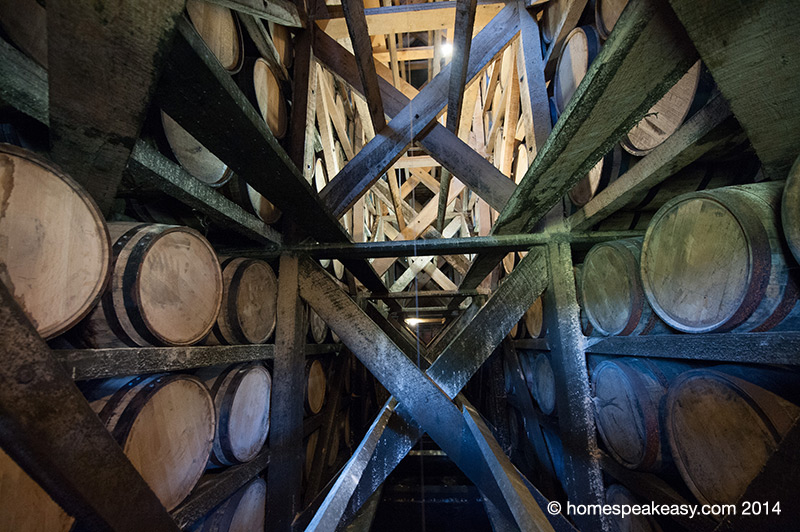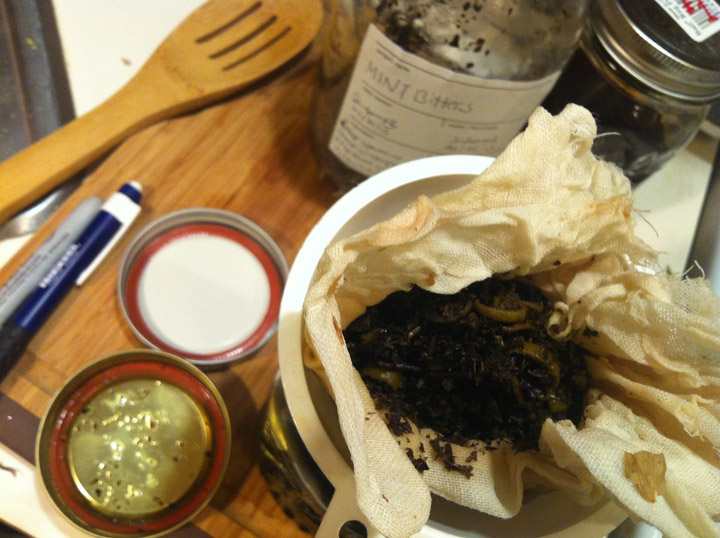Our first stop was the Heaven Hill Distillery. The largest family-owned, and second-largest holder of barreled bourbon in the world, clocking in at 1.5 Million 53-gallon barrels. According to Heaven Hill, bourbon came about when Elijah Craig had a barn fire that charred the inside of his barrels. After deciding to use the barrels anyway for his corn whiskey, the long trail south to where the whiskey was being delivered had mellowed the whiskey and turned it a nice caramel color. Drinkers began asking for the whiskey from Bourbon County, eventually shortened to Bourbon.*
After a massive fire in 1996 that consumed 90,000 barrels of bourbon, Heaven Hill built a new distillery at a different site, but the aging still happens at the rickhouses on the original site. They lost so much product in the fire that all the major area distilleries donated one full day of production to Heaven Hill to help them get back on their feet.
Heaven Hill uses a 70% corn mashbill and a #2 char on their barrels. The number designates the amount of time the barrel is charred, and thus the amount of char it receives. We were fairly surprised to learn on the trip that most of the distilleries make a surprisingly small range of raw distillate. Very little of the character of the bourbon (20%-40%, depending on who you ask) comes from the whiskey itself, the vast majority of the flavor coming from the barrel, location, heat and time.
Inside the rickhouses, an interesting feature is the X-beam running through the center of the building. Because of the sheer weight of all those barrels, the buildings need to be able to shift slightly, and the barrels need to be removed evenly to prevent a large shift in weight that could damage the building itself.
But the one thing that really sticks when you walk away from the rickhouses is how amazing they smell. You might think all those decades of aging whiskey would fill the building with an astringent alcohol smell, but that isn’t it at all. They smell like sweet wood and vanilla, and if they had a way to make my house smell like that, I’d pay an awful lot of money for it.
Following the tour of the ricks, we had a tasting of a few of their bourbons. Their standards are solid, if a little sweet and mellow for my tastes. I also picked up a bottle of their newest limited release, William Heavenhill, an 11 year old bourbon that was one of my personal favorites of the trip. Big and flavorful and delicious. If you somehow manage to come across it, I’d definitely recommend shelling out for a bottle.
Next up: Willett Distillery
* A lot of the history and majesty surrounding the bourbon industry is a little magical and hazy, so you learn pretty quickly to take what you hear about the origin stories with a grain of salt. Everything has a charming and fortuitous story tracing everything back to one man whose name you’ll see on bottles today. With a little research, I’m sure you’d find all the claims to be exaggerated at best, but for our purposes, I’m just repeating what the distiller told me. The same goes for the “largest,” “biggest” and “most” statistics. They’re not incorrect, just bent to sound a little more triumphant. Just about every distillery you go to has a (rightful) claim on being the biggest producer of X or first producer of Y.

























